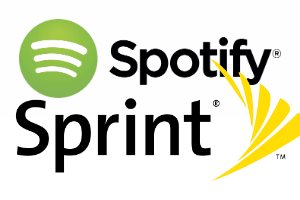 The latest music/telecom partnership is on the way, as Spotify and Sprint reportedly work on a bundling deal to be announced later this month. Perhaps modeled on the tie-up of Beats Music with AT&T, which offers discounted music subscription to families using the cell-phone service, the Spotify/Sprint arrangement could offer music savings to users of the carrier’s “Framily” (Friends and Family) plan.
The latest music/telecom partnership is on the way, as Spotify and Sprint reportedly work on a bundling deal to be announced later this month. Perhaps modeled on the tie-up of Beats Music with AT&T, which offers discounted music subscription to families using the cell-phone service, the Spotify/Sprint arrangement could offer music savings to users of the carrier’s “Framily” (Friends and Family) plan.
This news (only a rumor, but probably a leak) is getting a lot of pixels, deservedly. As a counterpoint to the splashy Beats/AT&T announcement in January, the Spotify/Sprint alliance would complete a bold thrust-and-parry between the two competing music services. Also, the tie-in would illuminate the importance of leveraged partnerships to companies like Spotify and Beats, while signalling a warning to smaller music services that have less clout to make major distribution deals.
Every study of recent music consumption metrics (IFPI, RIAA, Nielsen), shows streaming music on a sharp growth curve. The popular meme is that access (streaming from the cloud) is the new ownership (downloading from iTunes). So, streaming is mainstream, right?
Yes and no. Ad-supported streaming, which emulates terrestrial radio in the simplicity of its lean-back experience, has impressive reach. Services like that are called “non-interactive” services, and exist in a legal bucket that contains specific music-licensing laws. Market-leader Pandora has about 75-million active listeners each month, and claims about nine percent of total U.S. radio listening.
But “interactive” services like Spotify (different legal bucket for licensing and royalties) seek subscribers who activate enhanced on-demand features for a monthly fee. Spotify owns 6-10 million subscribers around the world — a small fraction of its potential audience.
So, while streaming and the market model it represents are growing the subscription business is in its infancy, and a deal like Spotify/Sprint can play an important introductory role for mainstream consumers — and also streamline the sign-up by slipping the cost into the family’s existing phone bill.
